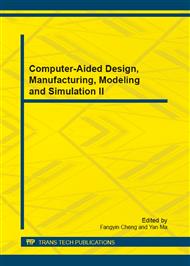p.3
p.7
p.12
p.17
p.22
p.28
p.33
p.37
The Development of a New Drum Washing Machine with Universal Motor
Abstract:
The brush with universal motor in the existing drum washing machines features easy-to-wear, poor reliability and low efficiency. In this paper, a new washing machine with universal motor is introduced. In this product, the technical performance indexes of the universal motor is improved, production cost is reduced, and also the service life is longer, because the lamination accuracy and optimization coiling method improving rotor's lamination and the process control of low noise, low vibration, and abnormal-sound-free of the motor in high rotation speed are applied. Experiment indicates that this product features low noise and high overload ability, and its technical reliability, efficiency and noise are satisfactory.
Info:
Periodical:
Pages:
7-11
Citation:
Online since:
December 2012
Authors:
Keywords:
Price:
Сopyright:
© 2013 Trans Tech Publications Ltd. All Rights Reserved
Share:
Citation:


